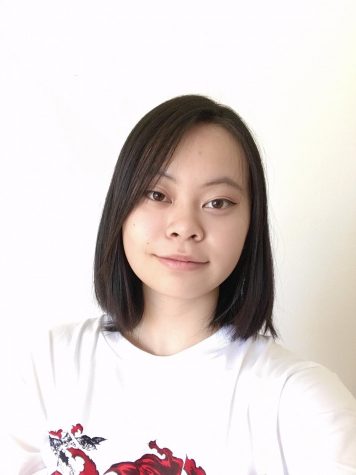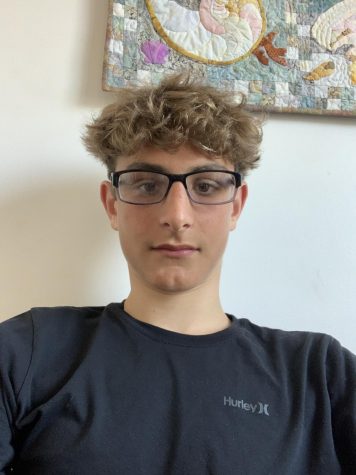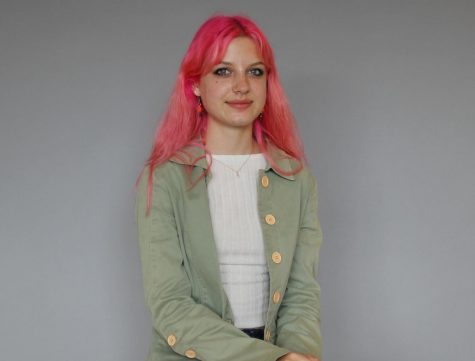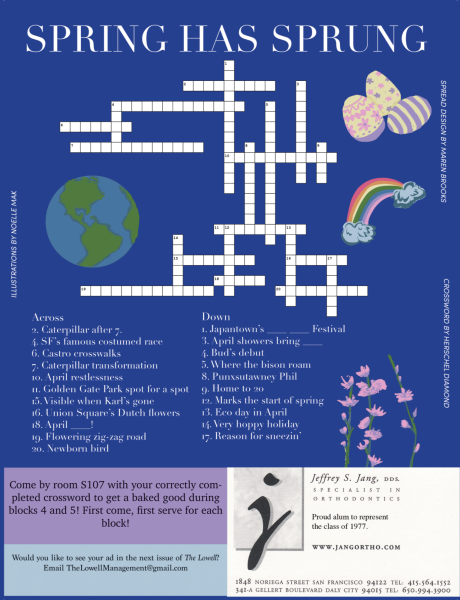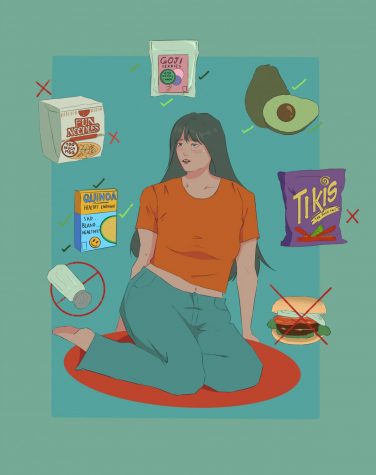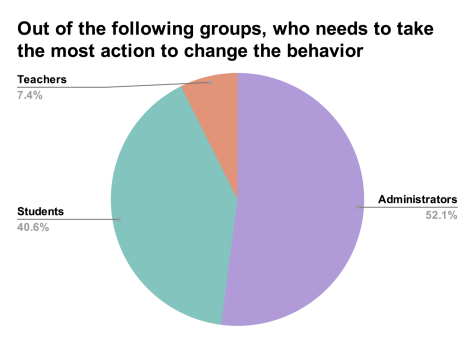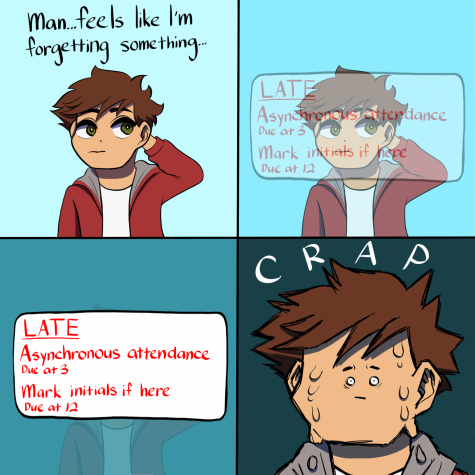The racial divide over admissions

“Since when was excelling in academics a promotion of segregation?” “From the outright denial that racism exists to the internal bias that assumes the next generation of Lowellites don’t deserve to be there — how dare you?” “Removing the selective admissions process itself is racist…” “The admissions process is deeply rooted in white supremacy…” Lowell senior and Black Student Union President Shavonne Hines-Foster saw these comments and hundreds of others like them flood the internet through social media pages and online platforms when the news broke in February that Lowell was permanently shifting away from its selective test and GPA-based admissions to the lottery admissions system used by the other public schools in the district. Hines-Foster, who co-authored the resolution to change Lowell admissions in hopes of increasing diversity, particularly of Black, Latinx and Pacific Islander students, slowly saw the news lay bare the blatant racial tensions of her community. It left her with a sense of anger, but not surprise.
Underlying the debates during Board of Education (BOE) meetings and circling petitions that preceded the 5-2 Board vote that codified lottery admissions for Lowell, a steady undercurrent of racially targeted comments posted to social media forums emerged. In it, minority is pitted against minority, with Lowell admissions at the center. In the context of Lowell’s history with racism, the model minority myth, and growing awareness of anti-Asian hate and anti-Blackness, many are starting to realize just how much Lowell admissions has exposed racial tensions at Lowell and made its mark in exacerbating a preexisting divide between Lowell’s Black and Asian communities.
It’s no secret that Lowell lacks diversity. According to 2019 statistics, the school is 50.3% Asian, 16.6% White, 10.4% Hispanic, and 1.8% African American. Against the backdrop of this imbalance between different races in the student population, there have been murmurings about microaggressions and racial incidents targeting Black and Brown students at Lowell for years. According to some, the culture of elitism at Lowell further plays into this. Senior Theodore Keller, who is half white and half Asian, noticed a running joke of using phrases like “band three kid” as insults towards non-Asian students during his freshman and sophomore year, referencing Lowell’s previous three-band admissions system where 15 percent of seats were reserved for students from underrepresented middle schools and an additional 15 percent were reserved for students who showed perseverance through hardship. Keller believes implicit racial biases are closely tied to these incidents and displays of elitism. “I think there’s definitely that underlying bias — a really nasty bias — and stereotype that Asians are the smart ones, and then everyone else is just not as smart,” he said. “I think that definitely fueled a sense of superiority or disliking of people that got in through [band two and three].” Sophomore Brayden Yee also noticed these types of comments. He had heard some parents involved in his extracurricular activities say that certain students did not deserve to be at Lowell. Keller thinks that while the racial biases underlying Lowell’s culture of elitism might not be obviously displayed, they would still make for a difficult high school experience for Black and Brown students. “I’m of the belief that there’s not a lot of outright racism, but there’s a ton of people who hold these beliefs behind closed doors that aren’t saying it,” he said. “That can definitely manifest itself in real ways.”
Many Black students at Lowell have experienced this implicit bias, mostly through the assumption that they “stole spots” or are not as smart as their white or Asian peers. “I’ve had some people come up to me and tell me, ‘You took my spot,’” said senior Sonia Olouch, who is the vice president of the Lowell Black Student Union. “It made me feel like I didn’t belong in the school and that I only got in because of my race.” Olouch also feels that even some teachers don’t appear to think that Black and Brown students are as smart as the majority and may treat students differently based on race. “When the Black and Brown community go into Lowell, they’re more likely to experience microaggressions,” she said. “People have stereotypes over them.”
Even more of this discrimination can be seen on the Black Student Union’s “Black at Lowell” social media campaign, which posts testimonies from Black students and alumni. “No offense, but how did you get into Lowell? Affirmative action is real,” was said to an alumnus from the class of 2015. Another student heard during a group project: “You don’t have to do anything, just write your name.” and “Who’s going to do her part?” Underestimation by classmates is a common thread in the testimonies. “I work really hard in school, but I’m not allowed to stumble or fall or learn not to fail,” one person said. “To them, I’m already a failure.”
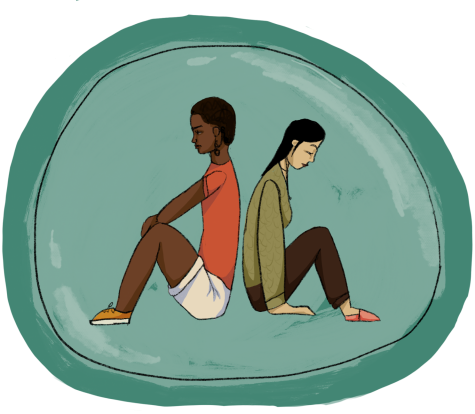
These preexisting biases came out even more explicitly in the aftermath of Lowell’s permanent change to lottery admissions. With limited spots at Lowell and previous experiences with microaggressions at Lowell, many supporters of the lottery system felt like Asian parents were trying to keep Black and Latinx students out. In turn, many who supported keeping selective admissions felt that their hard-earned spots were being taken away. “A lot of parents are hyper-aggressive about getting their kids into Lowell, and a lot of them are Asian, at least in my experience,” Keller said. According to him, this hyper-aggressiveness leads to some parents getting upset when their kids’ chances at Lowell are seemingly threatened by band two and three, and most recently, by the implementation of the lottery system. “If Asians feel that they’re being shunted to the side, or if they feel like other groups are being preferred over them… it only worsens the existing racism and biases that we have towards [Black and Brown students],” Keller said. Many are upset that “less deserving” students are taking their spots, and this is especially pronounced in older generations, like Keller’s grandfather. He also feels that these sentiments have been passed down to the current generation, although it has been diluted.
The change in Lowell’s admissions policy has further pitted the two communities against each other, as some Asian students feel unseen in admissions discussions. Senior Branden Lin feels that the targeting of the previous admissions policy and the way that the decision was handled ostracized Asian Americans at Lowell. “It sort of signals to us that we’re not a welcome part of the minority community,” Lin said. “The lack of understanding between the [Black and Asian communities] definitely contributes to racial divide.” He believes that the model minority myth is also a factor in the misunderstanding of the Asian American community and divides the Black and Asian communities. The model minority myth is a stereotype that describes Asian Americans as a civil, hard-working group that achieves higher success in society due to talent and effort, according to the organization Learning for Justice. “Too often, they forget that we are also people of color,” he said. “The model minority myth is really hurtful because it glosses over the discrimination that we often face.” Hines-Foster agrees that the lack of understanding between the two communities plays a big role in the division of the Lowell community. “It definitely stems from stereotypes, anti-Blackness, and anti-Asian sentiment in both communities,” she said.
Another Lowell student, Adam, who wished to use a pseudonym due to the sensitive nature of the issue, said that the clear divide he saw between the Asian and Black communities stems from the Board of Education’s failure to promote racial unity through their policy and phraseology. “[One of the] issues is that people recently, including the Board of Education, have been grouping Asian people with white people,” he said. In the resolution written by the BOE to make Lowell admissions a lottery, the phrasing lumps White and Asian students together on several instances and excludes most Asian students when listing minority groups, with the exception of Pacific Islander students. Adam expressed disappointment in this overlooking of Asian students as people of color and a racial minority. “As people of color, they know what it’s like to be discriminated against,” he said. Adam continued by saying that it was important to note that white people have created stereotypes like the model minority myth that have been harmful to all people of color. “Once again people go after the stem and leaves of the issue and not the root,” he said. “This racial issue spreads far beyond Asian v. Others… Instead of fighting amongst ourselves as people of color, unity should be the ultimate goal.”
Adam also noted that right now, it is hard to have an open conversation about race and racial relationships at Lowell. “To be honest, the conversation about race in general unfortunately does divide people,” he said. Adam feels that people are afraid of the repercussions of speaking up, which results in discussions on racial equity at Lowell being one-sided leading to less discussion of anti-Asian racism and Asian perspectives in general. “Those who don’t want to be canceled may harbor animosity for not being able to have their opinions heard,” he said. Hines-Foster agrees that it’s difficult to have conversations on race at Lowell. She also notes that the school does not facilitate many conversations about the topic, which makes it tough to unlearn biases, a crucial part in improving each group’s relationship with the other. “Because no one talks about it, no one gets that knowledge,” she said.
Even after the initial shock of the decision rolled through the community, Black and Asian communities continue to be divided over local politics. On March 19, Lowell alumna Diane Yap publicized old tweets written by Board of Education Vice President Alison Collins which expressed anti-Asian sentiment. Collins had compared Asians to a “house n****r” and questioned their anti-Black sentiments. Yap had previously expressed disagreement with the decision to make Lowell’s admissions a lottery system in a way that was, according to many in the community, anti-Black and similar to the behavior Collins described in her tweets. “You don’t think you have equal rights?” Yap replied to a member of the Lowell High School Facebook Group. “What right does a black American not have under the law that a white American does?” Collins was one of the authors of the resolution that introduced the change to Lowell’s admissions policy, as well as one of the five Board members who voted to pass it. “Yap… told me that after listening to several school board meetings on ending Lowell’s admissions, she thought some school board members have ‘anti-Asian bias’ and didn’t seem to care ‘what happened to Asian kids,’” Han Li, a reporter for World Journal tweeted. The unearthing of these tweets allowed many, including the group Recall SF School Board, to use them to further oppose the Lowell admissions decision and call into question the true motivations behind Collins’ actions, contributing to further division between the Asian and Black communities.
These tensions, however, are far from Lowell-specific or even SFUSD-specific. They are and have been present throughout the country. Mary Tablante, a manager in the communications team at Asian Americans Advancing Justice feels that white supremacy and the model minority myth play large roles in the division between Black and Asian communities in America as a whole. “That is a direct result of white supremacy really, because they know that if communities of color show solidarity, we would have more power together, so they’ll do everything to keep communities apart,” she said. “Asian Americans have too often been put as a wedge between other communities of color.”
University of San Francisco African American Studies Professor James Taylor also agrees that the root of the issue surrounding selective admission processes and affirmative action is white supremacy creating the illusion that races need to fight each other for limited opportunities. He notes that the Asian community is not the one that prevents affirmative action legislation from passing, but that “white voters and white leaders, in government and civic groups, are the ones that make that determination.” He points out that both Black and Asian communities do act in unity on some fronts including political coalitions. Taylor also notes that white people mainly comprise the ruling class in America and that Blacks and Asians are not really trying to oppose each other, rather trying to find ways to get a leg up on white people as a minority population. “[Asians are] looking at whites too and they’re saying, given our circumstances, as a minority population, we have to fight for every seat we can in America,” Taylor said.
Like Tablante, Taylor believes that the division between racial groups like that seen between Black and Asian students often works for the long-term detriment of both groups. “If we didn’t have so much resentment towards helping groups across racial boundaries in our country, people might see that it is to everyone’s advantage that those who are least advantaged are given a better opportunity,” Taylor said.
Despite the long history of tensions between Asian American and Black communities both in the United States and at Lowell, many believe the two communities can move forward together. Hines-Foster expressed hope for the future of Black and Asian relationships at Lowell. She pointed to the recent United We Stand event as a step down that path. According to her, the event was productive and was attended by students of all races and many different student organizations. “We had a conversation that was really powerful,” she said. “We talked about a lot of the stuff we’ve experienced, and a lot of stuff we heard growing up in school about both communities.” Tablante believes that these issues will change for the better over time and with better education on the subject. “The first thing we have to do is know that anti-Blackness exists, and that we need to talk about it,” she said. She also believes that the Black and Asian communities can be better allies for each other with the implementation of multicultural and intersectional curriculums from kindergarten through higher education. Keller agrees, believing that a more comprehensive anti-racism curriculum than the current one implemented by Lowell’s Coordinated Care Team is needed. He suggests a mandatory class, or even just more in-depth lessons taught by trained experts, as he feels that the current curriculum doesn’t delve deep enough into the ideas it presents. “Just watching a few videos isn’t going to change anyone’s mind,” he said. “It’s a good start, but I think a much larger scale program needs to be put in place to truly fix this issue.”
Taylor also says that there are a lot of moments of Black and Asian unity and even cultural blending between the two groups that provide hope for unity. Throughout history, examples of Black-Asian solidarity have emerged again and again. In 1899 and 1965, Black leaders opposed the Philippine-American War and the Vietnam War as an act of solidarity with the Asian communities hurt by the wars. In 1967, Black and Japanese Americans worked together to repeal the Emergency Detention Act. Asian Activists like Yuri Kochiyama and Grace Lee Boggs were also strong supporters of Black movements, and the slogan of solidarity “Yellow Peril supports Black Power” popped up in the ’60s. Just this past Sunday in New York City, the activist group Running to Protest organized an event where Black and Asian Americans marched in solidarity against the recent uptick in hate crimes. And with the Black Lives Matter and Stop AAPI Hate movements building steam alongside each other, Hines-Foster believes they show the power of both the Asian and Black communities in harmony. “We’re stronger together than we are against each other,” she said. “There definitely is a path to Black and Asian solidarity.”

